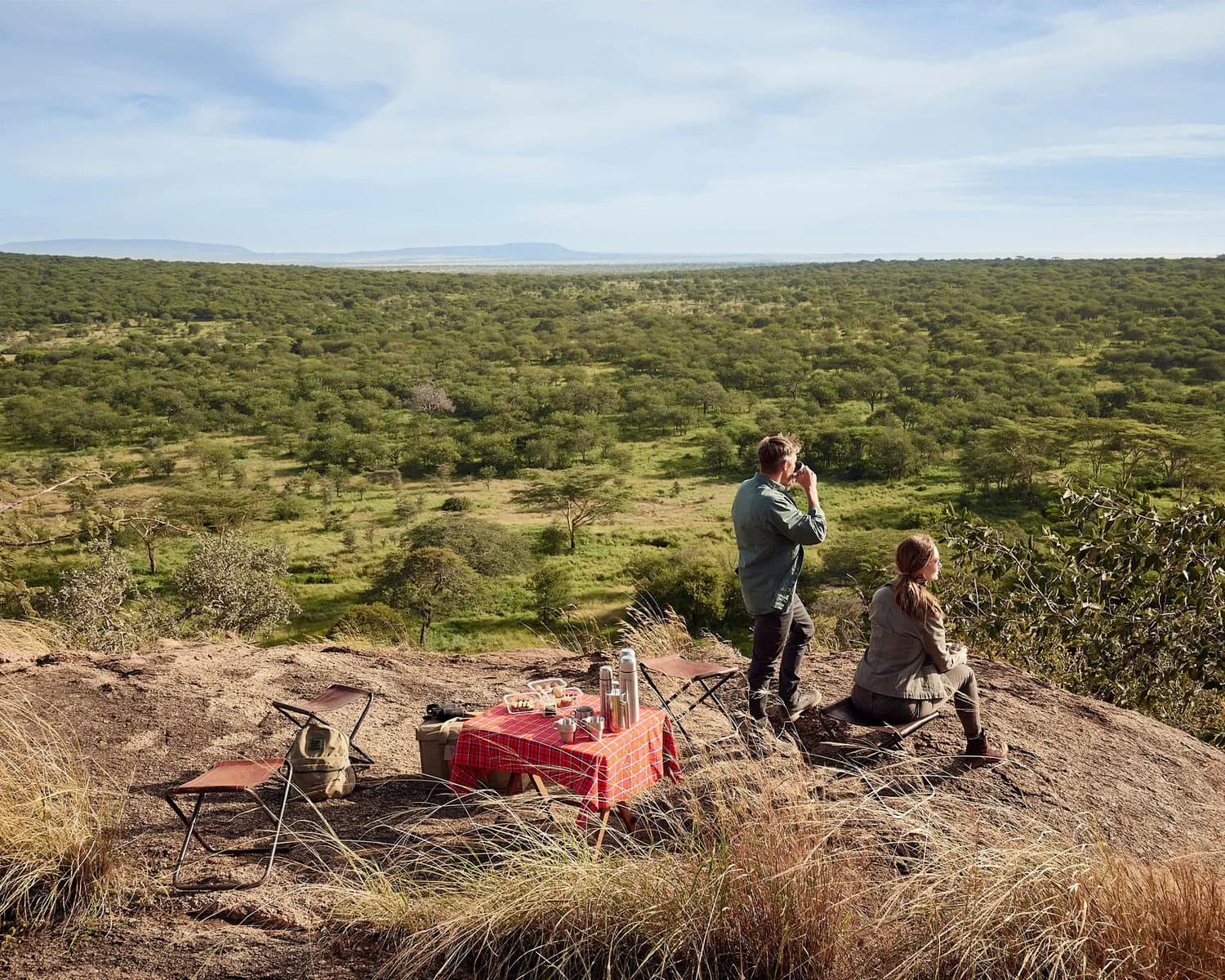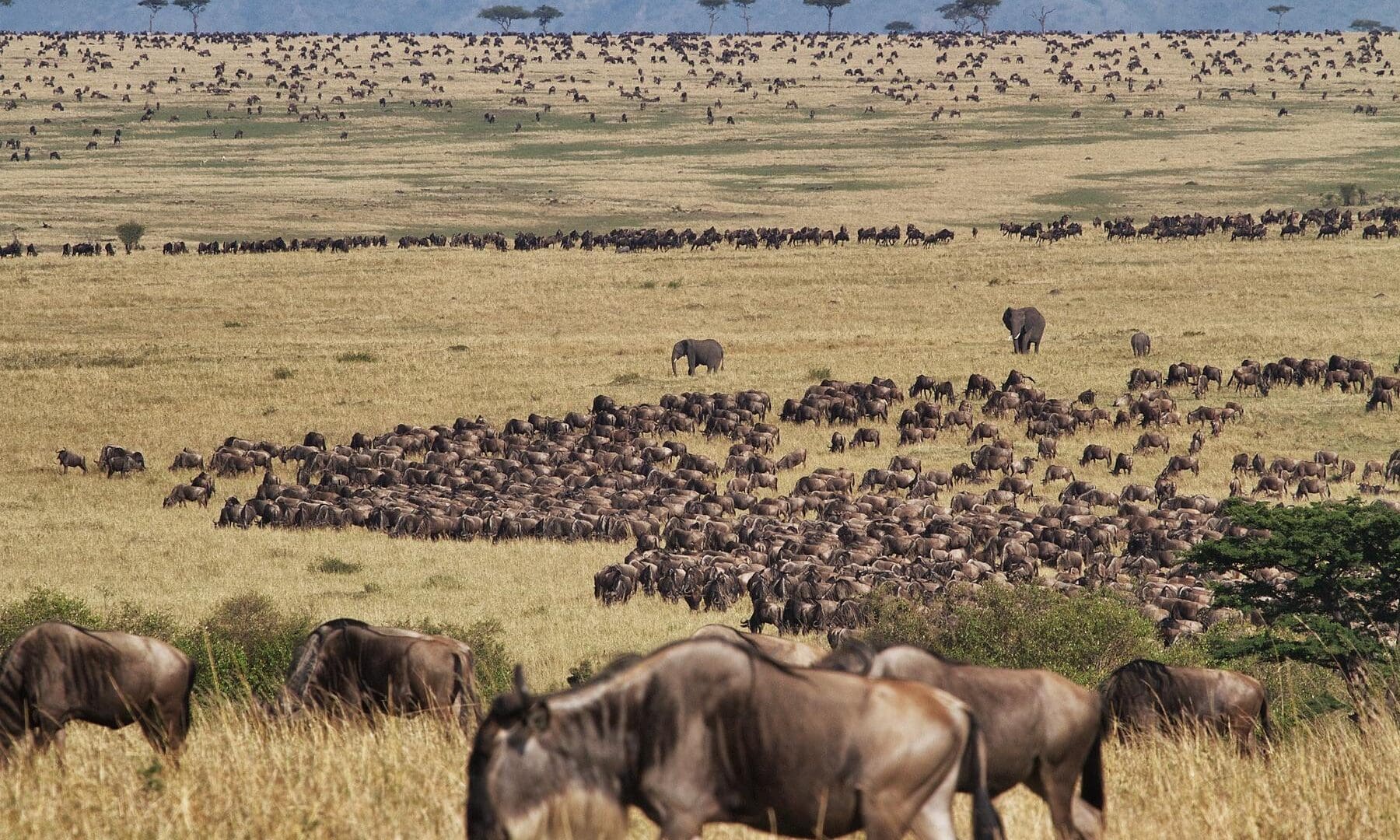January is part of Tanzania’s shoulder season, bringing humid weather, green landscapes, and quieter reserves. While some regions experience heavy rains, the northern circuit (including the Serengeti) remains accessible. It’s a rewarding month for birders and those who want a more intimate experience without the peak season crowds.
Weather in Tanzania in January
If you visit Tanzania in January, expect warm, humid weather, with occasional thundershowers that refresh the landscape. Typical of January in Africa, the rains bring about a vibrant green transformation to the terrain, making it a photographer’s paradise. Lightweight clothing, including a rain jacket, is ideal for navigating the occasional downpours.
Average Weather in January
| Temperature | Celsius | Fahrenheit | Rainfall |
| Min | 10℃ | 50℉ | 1.2 inches |
| Max | 28℃ | 82℉ | 8.5 inches |
National Parks to Visit in Tanzania During January

Serengeti National Park
January is calving season in the southern Serengeti. Thousands of wildebeest give birth on the Ndutu Plains, attracting predators like lions and cheetahs. The dramatic predator-prey action and vibrant scenery make it one of the most dynamic months for wildlife viewing.
Ngorongoro Crater
The Crater is accessible year-round and remains productive during the wet season. Resident wildlife is abundant, and the crater floor is particularly lush in January. Birding is excellent, with many migratory species present.
Tarangire National Park
Tarangire is quieter in January, with thick vegetation and fewer tourists. Although wildlife disperses during the wet months, elephant sightings remain likely, and birdlife is prolific. The green season transforms the baobab-studded landscape into a lush habitat.
Activities to Do in Tanzania During January
- Witness the wildebeest calving season in the Serengeti
- Birdwatching across multiple parks
- Scenic photography of the green landscapes
- Predator sightings during calving
- Explore the Ngorongoro Crater with fewer crowds
























